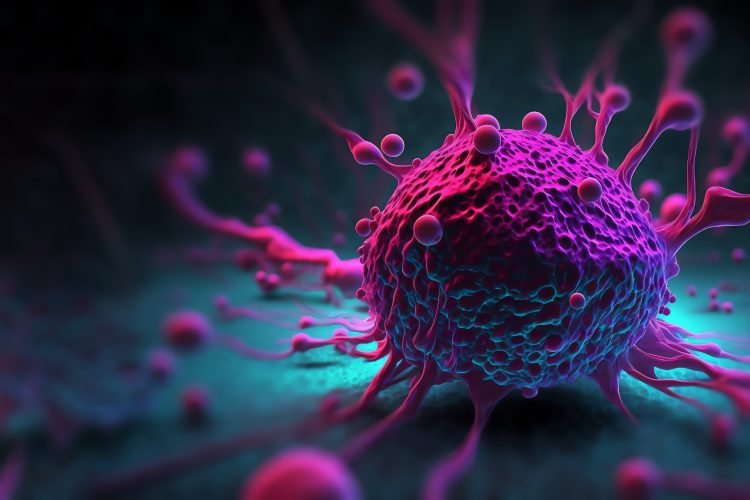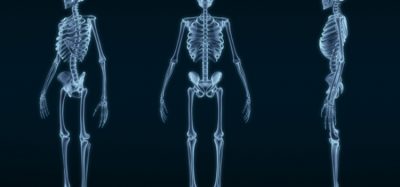From data to therapy: emerging tech driving cancer drug discovery
Posted: 30 September 2025 | Dr Malini Rajagopalan (Vice President and Head of Marketing at 1Cell.Ai), Mohan Uttarwar (Entrepreneur and Innovator) | No comments yet
Multiomics, AI and liquid biopsies are giving researchers real-time insight into tumour biology and enabling more personalised cancer therapies. Find out how these technologies are advancing biomarker discovery, improving patient stratification, and guiding the design of new treatments.


The complex heterogenous nature of cancer requires a personalised response and translational oncology is evolving to meet this need. Here, Dr Malini Rajagopalan and Mohan Uttarwar, 1Cell.Ai, explore the innovative technologies that are advancing oncology research and drug development.
The landscape of cancer drug development is undergoing a profound transformation. Driven by the need for precision, speed and predictability, oncology research and treatments are being reshaped by innovative, emerging technologies. By enabling researchers to understand cancer at a deeper level these advancements are facilitating more effective targeted therapies.
The landscape of cancer drug development is undergoing a profound transformation.
Among the most impactful innovations are those centred on emerging biomarkers, single-cell multiomics, liquid biopsies,1 AI-based analytics and advanced computational tools. Collectively, these technologies are not only refining our understanding of tumour biology but also changing how we identify drug targets, stratify patients and evaluate therapeutic responses in real time.
One of the most compelling examples of this convergence is the advent of a technology platform that unites live-cell isolation, true single-cell multiomics and AI-driven analytics. Such platforms represent the frontier of translational oncology – accelerating biomarker discovery and enabling more adaptive, personalised drug development strategies.
The expanding role of biomarkers in cancer drug development
Biomarkers have long been essential in oncology, from HER2 testing in breast cancer to PD-L1 expression in immunotherapy.2 Historically, most biomarker analyses have relied on static, tissue-based assays. However, with emerging technologies it is now possible to capture dynamic, real-time information from tumours through blood-based biomarkers such as circulating tumour cells (CTCs) that shed into the bloodstream during the metastatic cascade, providing a more accurate reflection of cancer evolution and treatment response. The dynamic biomarkers derived from CTCs offer greater predictive power than static tissue biomarkers.
Several classes of biomarkers now underpin precision oncology:
- Genomic biomarkers – derived from mutations, insertions/deletions, copy number alterations or rearrangements. These inform on diagnosis, prognosis, treatment response and patient-specific therapy design. For example, EGFR mutations in non-small-cell lung cancer predict response to tyrosine kinase inhibitors, while BRCA1/2 mutations indicate susceptibility to PARP inhibitors.
- Protein biomarkers – membranous proteins or secreted factors can guide treatment choices and monitor disease progression. Notable examples include HER2 expression in breast cancer, guiding HER2-targeted therapies, and prostate-specific antigen (PSA) for prostate cancer detection and monitoring.
- Immune biomarkers – indicators of immune activity in the tumour microenvironment or peripheral circulation. PD-L1 expression and tumour mutational burden (TMB) are predictive of response to immune checkpoint inhibitors.3
- Circulating biomarkers – these include CTCs, circulating tumour DNA (ctDNA) and exosomes, all measurable in blood or other body fluids.4 They offer a minimally invasive method for monitoring tumour dynamics, metastasis and therapy resistance.
By integrating information across these classes of biomarkers, drug developers can stratify patients more precisely, detect resistance earlier and tailor therapies based on tumour evolution rather than static classifications.
Innovations driving biomarker discovery and validation
In recent years, technological progress has accelerated biomarker discovery and validation. Several emerging tools stand out as transformative:
- Artificial intelligence (AI) and machine learning (ML)
AI and ML enable large-scale analysis of multidimensional, multi-omics datasets, uncovering complex patterns across genomics, proteomics, transcriptomics and metabolomics. These tools are valuable when large amounts of data are generated since traditional statistical methods cannot fully capture the complexity of such datasets. These advanced technologies can predict disease progression, optimise patient selection, refine clinical trial design and improve drug development efficiency.5
- Genomics and precision oncology
Next-generation sequencing (NGS) platforms (eg, Illumina and PacBio) have revolutionised genomic profiling, enabling comprehensive assessment of mutations, rearrangements and structural variants that drive tumour biology.
Liquid biopsy technologies add further value by detecting ctDNA, CTCs and exosomes in blood. They are particularly useful for longitudinal monitoring, assessing tumour burden, tracking resistance mutations, identifying minimal residual disease (MRD) and evaluating therapeutic responses.
Advanced platforms, including those enabling true single-cell resolution analyses, provide a refined view. By capturing live CTCs alongside ctDNA, researchers can interrogate both genetic and phenotypic heterogeneity, which is crucial for biomarker discovery and drug development.
- Microfluidic and optical sensor technology
Microfluidic systems, including lab-on-a-chip (LOC) devices, allow highly sensitive assays from small sample volumes. Platforms such as Fluidigm’s BioMark or Bio-Rad’s Droplet Digital PCR systems facilitate detection of ctDNA, microRNA and specific mutations (eg, EGFR, KRAS) from liquid biopsies.
Optical sensors, including fluorescence-based and surface plasmon resonance (SPR)-based systems (eg, Cytiva’s Biacore systems), enable real-time biomarker discovery and drug binding studies. Their high sensitivity and ability to monitor molecular interactions noninvasively make them invaluable in early drug development and validation.
- Computational histopathology
Digital pathology combined with machine learning is redefining tissue analysis. Whole slide imaging (WSI) of H&E-stained slides, integrated with AI-powered computational methods,6 enables scalable and quantitative biomarker discovery. Computational histopathology can identify subtle expression patterns across large sample sets, facilitating identification of novel therapeutic targets.
Integration at the single-cell level
Among this array of transformative progress, one of the most significant advances lies in the ability to integrate multiomics at the single-cell level. Single-cell technologies provide unprecedented resolution of tumour heterogeneity, offering insights into clonal evolution, therapeutic resistance and microenvironmental interactions. Platforms that merge single-cell genomics, transcriptomics, proteomics, spatial omics and AI analytics7 are becoming central to translational oncology.
Biomarker challenges and advances
Despite growing clinical utility, the following challenges exist in the biomarker field:
- Standardisation – inconsistent protocols across laboratories hampers reproducibility and clinical adoption
- Heterogeneity – variability in biomarker presence across patients, tumour types and even within a single tumour complicates interpretation
- Validation – clinical validation remains a major bottleneck, requiring robust evidence from well-designed prospective trials to demonstrate clinical utility and predictive value
- Cost and complexity –the cost and complexity of these technologies must be addressed for routine use. Nonetheless, regulatory bodies are increasingly recognising the value of dynamic biomarker data, as evidenced by the growing interest in liquid biopsies, functional assays and AI-powered companion diagnostics.
Towards a new paradigm in oncology drug development
The traditional paradigm of one-size-fits-all cancer therapies is giving way to dynamic, data-driven, adaptive and personalised treatment strategies. Emerging biomarker technologies, especially those capable of real-time, single-cell resolution, are at the forefront of this transition.
The convergence of multiomics, AI analytics, liquid biopsy and digital pathology is enabling researchers and clinicians to capture tumour complexity and translate it into actionable insights. By doing so, drug developers can design smarter, more targeted therapies that anticipate tumour evolution, thus improving patient outcomes.
The future of cancer drug development will not be defined solely by making better drugs; it will also be defined by developing smarter approaches and integrating emerging technologies to create robust, adaptive and personalised therapies that evolve with the tumour.
Acknowledgement
We would like to thank Dr Ajay Pandita, VP Scientific Affairs at 1Cell.Ai for his valuable feedback and constructive suggestions, which greatly improved the quality of this article.
Meet the authors
Dr Malini Rajagopalan


She holds a PhD in Molecular Biophysics from the Indian Institute of Science and has held senior roles at companies including ChromaCode, Agendia and Millennium Health. Passionate about bridging science and strategy, Malini focuses on translating complex molecular insights into impactful clinical solutions that support precision cancer care.
Mohan Uttarwar


Mohan’s work centres on addressing unmet needs in oncology and personalised medicine, leveraging cutting-edge platforms to improve patient outcomes. A visionary leader, he excels in driving strategic growth, fostering collaborations and guiding teams to achieve breakthrough results. His contributions have significantly shaped the development of next-generation diagnostic tools, particularly in liquid biopsy and multi-omics.
He remains committed to advancing healthcare by bridging the gap between scientific discovery and clinical application, creating impactful solutions for patients and healthcare providers worldwide.
References
- Pantel K, Alix-Panabieres C. Circulating tumor cells in cancer patients: Challenges and perspectives. Trends Molecular Medicine 16(9), 2010:398-406.
- Passaro A, et al. Cancer biomarkers: Emerging trends and clinical implications for personalized treatment. Cell 187, 2024:1617-1635.
- Doroshow DB, et al. PD-L1 as a biomarker of response to immune-checkpoint inhibitors. Nature Reviews Clinical Oncology 18, 2021:345-362.
- Alix-Panabieres C, Pantel K. Liquid biopsy: from discovery to clinical implementation. Molecular Oncology 15, 2021:1617-1621.
- Alum UE. AI-driven biomarker discovery: enhancing precision in cancer diagnosis and prognosis. Discover Oncology 16, 2025:313-324.
- Huang Q, et al. Computational pathology: A comprehensive review of recent developments in digital and intelligent pathology. Intelligent Oncology 1, 2025:139-159.
- Yates J, Van Allen ME. New horizons at the interface of artificial intelligence and translational cancer research. Cancer Cell 43(4), 2025:708-727.
Related topics
Analysis, Assays, Biomarkers, Cancer research, Cell Cultures, Computational techniques, Drug Development, Drug Discovery, Drug Targets, Genomics, Lab-on-a-Chip, Machine learning, Personalised Medicine, Sequencing
Related conditions
Breast cancer, Non-small cell lung cancer (NSCLC), Prostate cancer
Related organisations
1Cell.Ai








